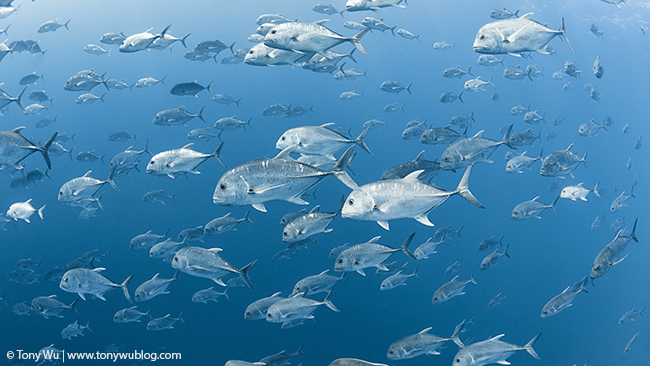Although the pursuit of whales has been my primary preoccupation in recent years, I've also set my mind to photographing large-scale spawning aggregations of fish...events which have got to be among the most jaw-dropping (yet underappreciated) of spectacles on this planet.
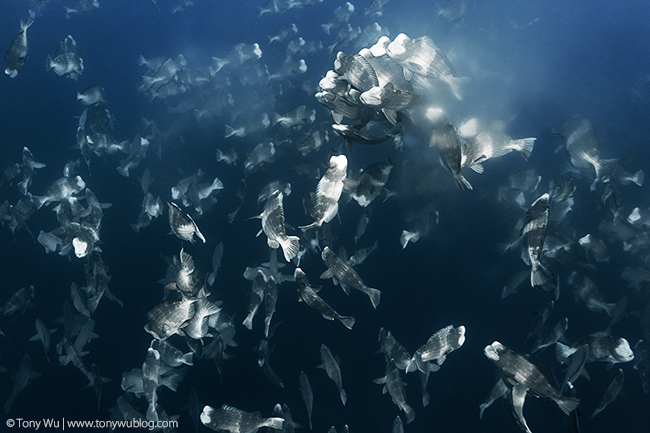
This April in fact, I'm headed back to Palau along with my friends from Nauticam for another go with bumphead parrotfish (Bolbometopon muricatum), the big white-headed, sex-crazed fish pictured above. (See my first post about this spawning phenomenon from April 2013).
In addition, we're going to be paying a visit to the massive spawning aggregation of sailfin snappers (Symphorichthys spilurus), comprising thousands upon thousands of beautiful yellow-and-blue snappers that only appear in such numbers a few times a year. It's a mystery where the fish go and what they do when they're not getting together for some hanky panky.
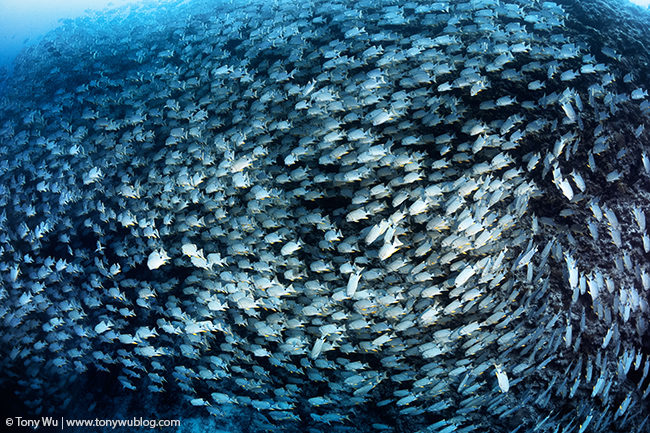
The photo above is of the fish gathering prior to actual spawning. Spawning for this species tends to happen so quickly that the blink of an eye seems an eternity by comparison...hence difficult to photograph. I have photos of these fish spawning, but none that I'm entirely happy with, so I'm going back to try again.
That's what I do. Pick a wall. Beat my head against it. Again and again. Repeat.
Though I didn't get the Symphorichthys spilurus spawning shots that I wanted during my visit to Palau last year, I did manage to get pictures of the developing fish embryo, with the help of friends Tom Bowling, who operates Biota Aquaculture Palau, and Richard Barnden (aka "Numbnuts"), who is one half of the Unique Dive Expeditions team. (The long-suffering other half is Paul Collins, who is arguably as much a babysitter for Richard as he is a business partner. Poor Paul. Poor Palau, actually.)
For you fellow fish geeks, here is a Symphorichthys spilurus embryo at 10 hours post-fertilisation:
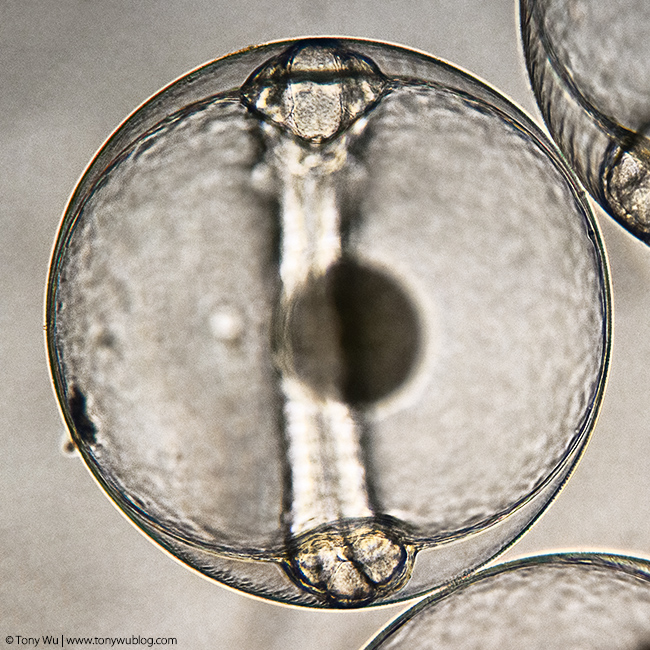
And below is a wee baby Symphorichthys spilurus at 35 hours. You can clearly see both eyes, the spinal development, yolk sac and anus. Cute, no?
Tom captured fertilised eggs while we were diving (picture big, scruffy Aussie dude with somewhat deranged expression charging madly into clouds of fish jizz while swooshing white net in the water...quite the spectacle indeed), and I took both of these photos using his field microscope with...believe it or not...a handheld D800. The photos turned out much better than I thought under the circumstances.
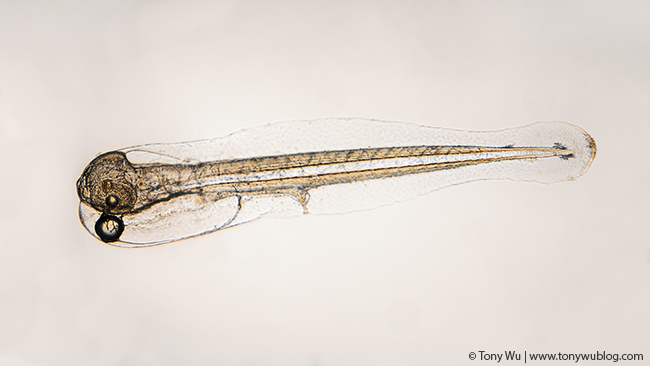
The trip is nearly full, thanks to the coordination and efforts of Phoebe at Nauticam. There's just one spot left.
The plan is for six days of diving, with the first day being 15 April, and the final day 20 April.
Besides Phoebe and Edward from Nauticam, well-known photographers Stephen Wong and Takako Uno will also be on the trip, along with four more divers from Hong Kong. Everyone will be using Nauticam equipment, so if you're looking for an opportunity to play with the latest kit, this is it!
The focus of the trip will be on the spawning dives, but we will definitely be hitting some of Palau's famous sites for reef dives as well, and we're also planning to do some blackwater dives if the currents and prevailing conditions permit. (Check out my previous blog post on blackwater diving in Palau.)
If you're interested in joining the trip, please let me know.
As with all diving in search of spawning aggregations, this trip is suitable for experienced divers, i.e., able to handle currents and can take care of themselves in the water.
To wrap-up, here's a photo of something else we'll be on the lookout for...an impressive phalanx of giant trevallies (Caranx ignobilis). They can often be found near where the sailfin snappers spawn.
